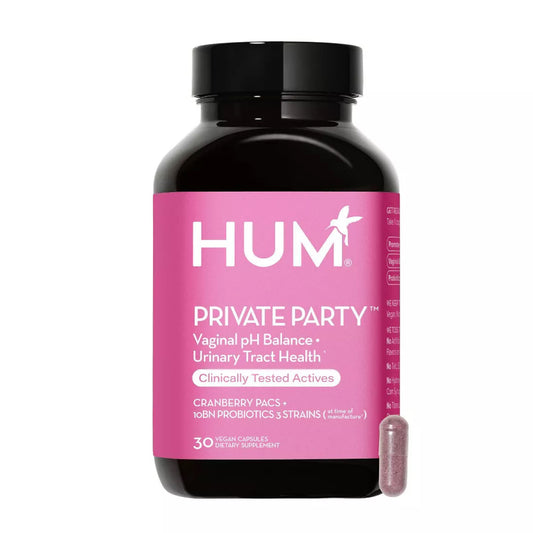CREATED IN PARTNERSHIP WITH ORIGIN
Sex isn’t always mind-blowing, but it shouldn’t be painful. All too often, sex can start becoming painful as you enter the stages of menopause. But this can lead some people to suffer through painful sex or avoid sex altogether.
However, you can reclaim your sexual pleasure and look forward to intimacy (e.g., no longer need to throw cold water on your partner’s attempts at foreplay). Keep reading to learn what happens in your body and brain when menopause hits and painful sex begins — and what you can do about it.
Why does menopause cause pain during sex?
Menopause causes a decrease in estrogen levels, which can make your vaginal and vulvar tissues thin and dry. This lack of moisture and lubrication, along with decreased blood flow to the pelvic floor, can result in pain during sex.
Along with uncomfortable symptoms like hot flashes and night sweats, changing estrogen levels can also impact sexual function, specifically:
- Weaker orgasms. Lower levels of estrogen are associated with less blood flow to tissues in the pelvic floor. The pelvic floor includes the muscles, nerves and connective tissue at the bottom of the pelvis. Those muscles support bowel, bladder, and sexual functions. In addition, the clitoris may not be as sensitive when touched. Orgasms may feel different, not as strong, or not happen at all.
- Pain during intercourse. The skin of the vulva and vagina can get thinner and drier when there's less estrogen. At the same time, less moisture and lubrication (also caused by lower levels of estrogen) can make the tissues more sensitive and less flexible. This all adds up to pain with any kind of vaginal penetration, a condition the medical field calls dyspareunia.

Experiencing painful sex even one time can lead to worries that the next time will be painful as well. Anticipating pain can cause muscles throughout the body to tense up. This can lead to even more pain during penetration. This cycle is called the vaginismus pain cycle, and we’ll dive into more detail below. In some people with genito-pelvic pain/penetration disorder (GPPD), even thinking about sex can cause pain and tension in the pelvic floor muscles.
What is the vaginismus pain cycle?
The vaginismus pain cycle is a loop of pain, fear, and increased pain that occurs during sexual activity. Here’s what’s going on in your body and brain. Talk to your healthcare provider if you have any questions about this pain cycle.
Phase 1
Pain during sex sends the signal to your brain to shift into fight-or-flight response. It may be difficult to stay calm, as your amygdala (the part of your brain that helps you process, interpret, and store emotions) takes over.
Phase 2
Now your brain sees penetration as a “threat”. As a result, your pelvic floor muscles tighten up, especially the ones near the vaginal opening.
Phase 3
Any attempt to penetrate through those tight muscles often causes more pain.
Phase 4
Your body was trying to protect you and “failed”. So, any pain during Phase 3 sparks future fear and anxiety about sex.
Phase 5
As this cycle repeats, your body finds it hard to forget the negative sexual experiences. The possibility of pain becomes imprinted on your nervous system.
Phase 6
You may dread, or even avoid, any sexual activity. This strengthens the fear and anxiety associated with vaginal penetration. This lets your amygdala keep controlling your body’s response.
Over time, this cycle can affect your romantic relationships, as well as your physical, emotional, and mental health.
What can I do about painful sex?
If you’ve had or are having pain with sex, one step to consider is to see a pelvic floor physical therapist. Exercises that strengthen and help the body recover can be helpful for menopause symptoms that make having sex painful.

How can a pelvic floor physical therapist help with painful sex?
A pelvic floor physical therapist can provide effective treatments for the symptoms of menopause that make it painful to have sex. They may use techniques like vaginal dilators, exercises to strengthen the core and pelvic floor, breathing exercises, safe movement, and healthy lifestyle tips. These interventions can help with blood flow and increase muscle strength and tone. They can also help with sexual problems if you have trouble having or enjoying sex.
What can I expect from pelvic floor physical therapy for painful sex?
In addition to physical interventions, pelvic floor physical therapy can also teach you about menopause and how it affects your body. It can also give you information about other treatments and help you build a network of healthcare professionals. The goal is to help you enjoy sex again and feel better physically, emotionally, and mentally.
Check out Origin to learn more.
How can a certified sex therapist help with painful sex?
Mental barriers can cause pain during sex. Talking to a sex therapist can help with this. Sex therapy and pelvic floor physical therapy can be an integrated approach that includes mind-body functioning. It can help with negative thoughts or beliefs about painful sex.





